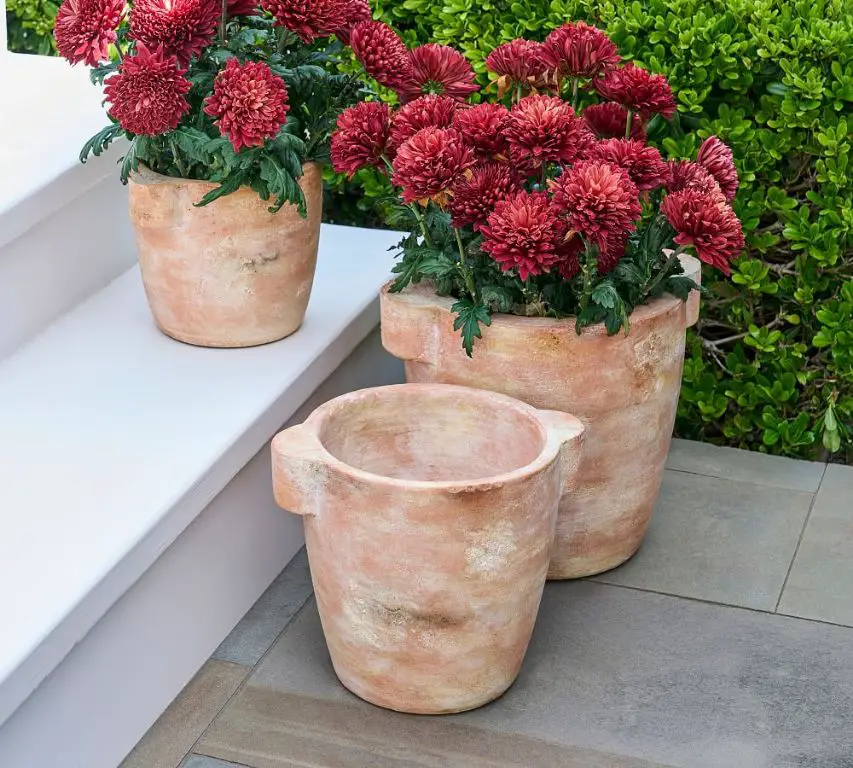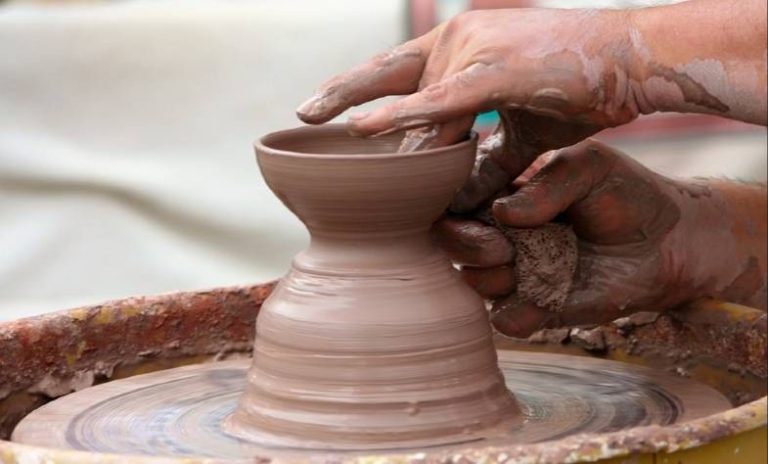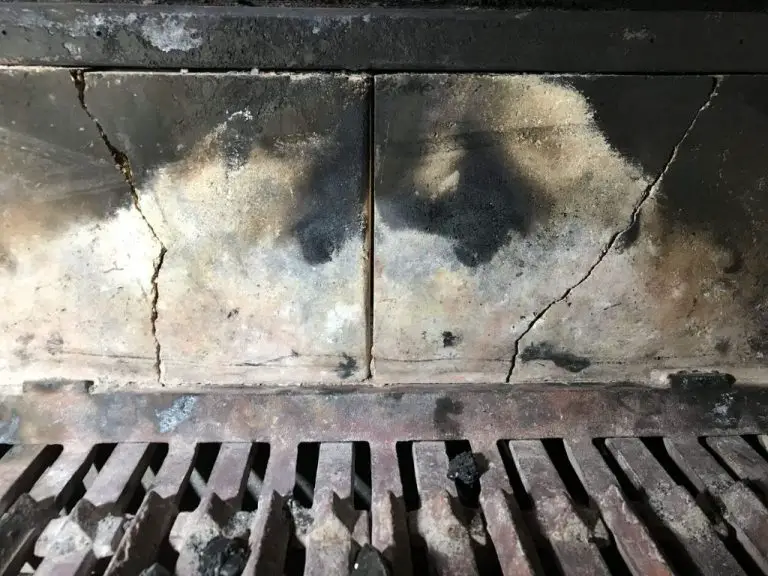Is Terracotta Hard Or Soft?
What is Terracotta?
Terracotta refers to a type of ceramic made from fired clay. The term comes from the Italian words “terra cotta” which literally mean “baked earth.” Terracotta has been used across many cultures for thousands of years. Some of the earliest known terracotta artifacts were made in China dating back to the Neolithic period around 10,000 BCE. Other ancient civilizations including those in Greece, Rome, Mesopotamia, and South America also produced terracotta works.
Historically, terracotta was a common material for sculpture and pottery due to its durability yet ease of shaping before firing. For instance, the ancient Chinese created vivid terracotta armies to guard the tombs of their emperors. Terracotta was also used extensively for architecture and building materials in many parts of the world.
Today, terracotta remains a popular choice for plant pots, decorative garden sculptures, architectural accents like roof tiles or bricks, and ceramic cookware. The clay used for most modern terracotta products comes from several major deposits around the world, including in India, Italy, and the Southern United States.
Terracotta Composition
Terracotta is made from clay, water, and other natural materials. The main ingredient is clay, which gives terracotta its distinctive red-orange color when fired. Specific clays used include red and brown firing clays that are high in iron oxide.
According to Limestone, the natural clay used for terracotta contains iron and magnesium, which produce the red-orange color through oxidization during firing. In addition to clay, terracotta may contain silica sand or grog (pre-fired and ground up clay particles) added to prevent shrinkage and cracking.
Terracotta is fired at a low temperature between 930-1050°C or 1710-1920°F. This low firing temperature allows it to remain porous and permeable to water and air. The firing process hardens the clay through sintering and creates terracotta’s distinctive earthy colors and texture.
Hardness and Strength
Terracotta has a Mohs hardness rating of approximately 5-6 on the Mohs hardness scale according to https://holst-porzellan.com/en/knowledge/characteristics/hardness/. This makes it a relatively soft ceramic material that is prone to chipping and abrasion compared to materials like porcelain or stoneware which have Mohs hardness ratings of around 7.
The typical compressive strength of terracotta is around 2,500 psi according to https://ceramics.org/ceramic-tech-today/mechanical-properties-of-ceramics. This is considered low to medium strength compared to other ceramics. It is durable enough for many applications but more prone to cracking under heavy loads than higher strength ceramics.
Overall, terracotta is considered a relatively soft, porous, low-to-medium strength ceramic. This affects its durability and makes it more suitable for low stress decorative applications rather than structural uses. Proper glazing and firing can help improve its abrasion resistance and strength, but terracotta remains a lower strength ceramic compared to materials like stoneware or porcelain.
Factors Affecting Hardness
There are several key factors that affect the hardness of terracotta:
Clay Composition
The specific clay minerals present in the raw terracotta clay have a significant impact on the final hardness. Clays containing higher amounts of silica and alumina will generally result in harder terracotta after firing, while clays with high organic content tend to be softer (Source). The plasticity of the raw clay also influences hardness.
Firing Temperature
Firing terracotta clay at higher temperatures increases hardness. Most terracotta is fired between 900-1050°C. Firing above 1000°C vitrifies the clay, fusing the silica and alumina particles together into a dense, non-porous material with improved strength (Source). However, firing too high can cause excessive shrinkage.

Glazes
Applying a glaze coating and then re-firing terracotta can further increase the surface hardness. The glassy glaze helps seal pores and provides an impermeable surface. Glazes with higher silica content generally produce harder surfaces (Source).
Terracotta vs Stoneware
Terracotta and stoneware are two common types of ceramic clay that have some key differences:
Terracotta is an earthenware clay made from clay, water and mineral oxides. It has a porous body and is fired at lower temperatures between 1700-2100°F. Terracotta contains more iron oxide and impurities compared to stoneware, making it more porous and brittle with lower hardness. It can be glazed or unglazed. Common uses for terracotta include flower pots, sculptures and decorative tiles [1].
Stoneware is a denser clay made from clay, feldspar and silica. It is non-porous and vitreous with very low absorption. Stoneware is fired at higher temperatures between 2200-2400°F resulting in stronger material that is more resistant to chipping. It can be glazed or unglazed. Stoneware is commonly used for tableware, cookware, storage vessels and architectural tiles [2].
The higher firing temperature makes stoneware harder, more durable and water-resistant compared to porous terracotta. However, terracotta can be used for items where high strength is not critical. Its warmer reddish tones from iron oxide also make terracotta desirable for sculptures and decorative uses where stoneware may not provide the desired aesthetic.
Terracotta vs Earthenware
Terracotta and earthenware are both made from clay, but there are some key differences between the two:
Earthenware is fired at lower temperatures, generally between 1000-1200°C, while terracotta is fired at higher temperatures between 1150-1300°C (wikipedia.org/wiki/Earthenware). This results in terracotta being denser and less porous than regular earthenware.
The lower firing temperature makes earthenware more porous and prone to absorbing water. Terracotta has lower porosity, making it water-resistant and more durable for outdoor use (www.soulceramics.com).
Due to its porosity, earthenware is best suited for indoor decorative items like vases and tableware. The less porous terracotta can withstand outdoor conditions, making it ideal for planters, garden sculptures and architectural elements.
In summary, the key differences are that terracotta has higher firing temperatures, lower porosity, greater durability and more versatility for both indoor and outdoor applications compared to regular earthenware.
Advantages of Terracotta
Terracotta pots offer several advantages that make them a popular choice among gardeners and plant enthusiasts:
Terracotta is a natural material made from clay. The raw materials are abundant and terracotta pots are relatively inexpensive to manufacture compared to other options like plastic or ceramics. This makes terracotta pots highly affordable and accessible (Terracotta Benefits).
The porous nature of terracotta allows air to pass through the material. This provides excellent ventilation and air circulation for plant roots. Terracotta also absorbs moisture from the soil and evaporates it from the surface of the pot. This cooling effect helps regulate soil temperature and prevent root rot in hot conditions (6 Benefits of Using Terracotta Pots).
Terracotta pots have a rustic, natural aesthetic. The orange hue and slightly irregular surfaces provide visual interest. As terracotta ages, it develops a patina that gives the pot even more character. Many gardeners enjoy the aged, vintage look of weathered terracotta containers (17 Astonishing Benefits of Terracotta Pots).
Disadvantages of Terracotta
While terracotta has many beneficial properties, it also comes with some drawbacks worth considering. One of the main disadvantages of terracotta is its brittle and fragile nature. Made from clay, terracotta has relatively low mechanical strength and is prone to cracking or breaking if dropped or impacted1. Handling and transporting terracotta pieces requires care to avoid damage.
Terracotta is also quite heavy due to its density. Large terracotta pots or sculptures can be cumbersome to move around. The weight of terracotta roof tiles may require additional structural support2. When used for flooring, the weight of terracotta tiles should be considered during installation.
The porous nature of terracotta is another potential drawback. While porosity provides benefits like breathability, it also means terracotta can soak up liquid, leading to staining, efflorescence deposits, and damage during freeze-thaw cycles3. Proper sealing and winter care is required when using terracotta outdoors.
Typical Uses
Terracotta has a wide variety of uses both historically and in modern times thanks to its durability and aesthetics. Some of the most common uses of terracotta include:
Planters
Terracotta is an extremely popular material for plant pots and planters. The porous nature of terracotta allows excess water to evaporate from the soil, helping prevent root rot in many plants. Terracotta pots come in a variety of shapes, sizes, and colors to fit any style. They also have a nice natural look and feel. According to Architropics (https://architropics.com/terracotta-uses-in-tropical-homes/), terracotta pots help adjust humidity and temperature for plants in tropical climates.
Cookware
Historically, terracotta was used to make bowls, pots, and other vessels for cooking. Modern terracotta cookware and bakeware is still popular thanks to even heating, moisture absorption, and earthy aesthetics. Companies like Emile Henry make high-end oven-safe terracotta cookware.
Tiling
Terracotta tiles have been used for floors and roofing for thousands of years. They are naturally water resistant while still allowing some breathability. According to Rang De Neela (https://rangdeneela.com/art-forms/), terracotta bricks and roof tiles remain very common globally. Terracotta provides a rustic, natural look in home tiling.
Sculptures
The malleability of terracotta makes it an ideal medium for sculptures, figures, and decorative objects. Archeologists have discovered terracotta sculptures dating back to ancient Greece circa 3000 BCE. Many cultures have used terracotta for religious idols and ceremonial objects thanks to its durability.
Conclusion
In summary, the hardness and softness of terracotta depends on several factors related to its composition and production:
– Terracotta is made from clay containing various minerals that affect its hardness when fired.
– Firing temperature plays a big role. Higher temperatures make terracotta denser and more durable.
– Terracotta contains pores even when fired, making it prone to chipping and fracturing.
– It is harder than earthenware clays fired at lower temperatures.
– But it is more brittle and porous than stoneware fired at higher temperatures.
– Overall, terracotta is relatively hard with moderate durability. But it is not as hard or durable as stones or advanced ceramics.
– Its hardness depends on the clay composition, production technique, and firing process.
– Terracotta strikes a balance between sculptability and strength for art, structural, and decorative uses.



